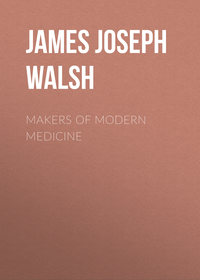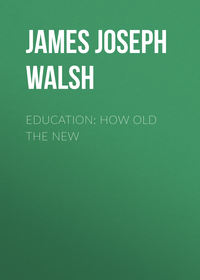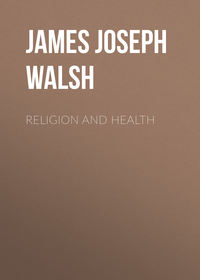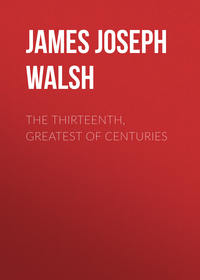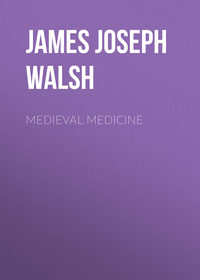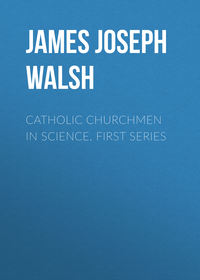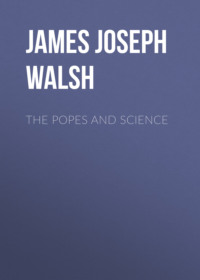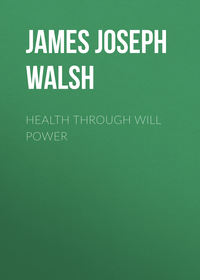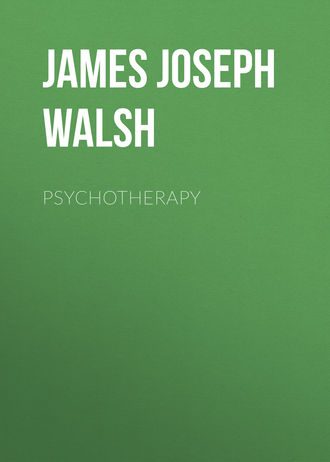 полная версия
полная версияPsychotherapy
The power of the pseudo-scientific aspect of electricity to influence patients, far from being lost in our time, has rather been increased. Our newspapers make their readers eminently suggestible because they constantly furnish suggestions, and nothing so strengthens a function of any kind as exercise of it. All sorts of electrical contrivances and apparatuses are advertised to cure various pains and aches. Many of them actually seem to relieve long-standing discomfort, though it is not through any electrical power that they do so, but entirely through their influence on the patient's mind. A museum of the electrical contrivances of various kinds for which absurdly high prices are paid at the present time and which people recommend to others because of having been benefited by them would be interesting. There are belts of many kinds, and rings, and medallions, and plates to be worn on the back and on the chest, and curiously shaped poles or "polar plates" resembling various organs, and pendants and armlets and anklets and insoles of many, many kinds, usually going in pairs, one made in zinc and the other in copper, and worth exactly as much as the weight of copper and zinc in them, yet curing chronic ailments by suggestion, or at least bringing relief from many pains and aches complained of.
LIGHT AND PSYCHOTHERAPY
Just as electricity has always been therapeutically abused by those who have taken advantage of the suggestive influence of its marvelous energy, so each new discovery in light has been the source of pseudo-scientific applications to medicine. When the explanation of photography was first made, shortly after the middle of the nineteenth century, and it was demonstrated that it was the blue light, or at least that end of the spectrum, and even some of the rays beyond the visible violet, which were the most active in this regard, applications of this fact to popular medicine became the order of the day. We had a wave of "blue light therapy" that wandered over this country and sold tons of blue glass. People simply sat beneath the blue glass as the sun shone through it and were supposed to absorb the actinic rays and acquire new life. According to many who had tried them, the ultra-violet rays were quite equal in their power to heal and restore new vigor to old frames to the fabled elixir of life of the olden time. "Rheumatism (that universal ill of the unthinking) in all its hydra-headed forms disappeared," as one enthusiast declared, "before the blue light, like the mists of the morning before the sun." All this, though it is said that the movement had no more serious foundation than the desire of a manager of a glass factory, who found himself stocked up with blue glass through a mistake, to dispose of his surplus stock. He not only did so, but many other manufacturers turned special attention to the new product because of the demand for it. The newspaper advertising was through the reading columns. The results were heard of on every side.
THE X-RAY
That happened two generations ago, and it might be supposed that in the meantime there had been so much advance in popular education, and particularly in the diffusion of scientific knowledge, that such a self-deception on the part of scientists, and blind following by the people, could not take place in our time. Just as soon as Roentgen discovered the X-ray, however, we began to have applications of that wonderful agent to curative purposes. About 1900, scarcely five years after Roentgen's discovery, there was hardly an ailment that some one did not claim to have seen treated successfully by the X-rays. Especially was this true for the chronic and hitherto supposedly incurable diseases. All the forms of malignant disease were treated by the new agent, and some supposedly marvelous cures were reported. Everything chronic was favorably affected—lupus, rodent ulcer, eczema, acne rosacea, even tuberculosis of the lungs. At the time I was on the staff of a medical journal, and the favorable reports came in so thick and fast that it really looked for a time as though the surgery of the future was to be much simplified. It took but a year or two to show us how little of lasting therapeutic benefit there was in the X-ray, in spite of the fact that it is a marvelous agent in its action upon living tissues. At the present moment it is used comparatively little, and its use is gradually diminishing, except for very special limited affections.
RADIUM AND RADIO-ACTIVITY
When radium was discovered, though it came so soon after the discovery of the X-ray and our disappointment with it, the old story of another pseudo-scientific medical application was told. For a time it looked as though radium might accomplish all that had been promised for the X-ray, though that promise had been so lamentably broken. Then, besides radium, we had brought home to us the whole class of radio-active substances, and their possibilities. The internal administration of radio-active liquids was one of the hopes of therapeutics. We had found it difficult to explain how many of the mineral waters produced the beneficial action credited to them when taken at the spring. We knew that artificially made waters of exactly the same chemical composition, so far as we could determine, did not have the same effect, nor even the waters themselves when taken at a distance from the spring.
With the discovery of the radio-active principle there came the suggestion that possibly the main virtue of mineral waters at the spring was due to radio-activity. This would not be present in artificial water and would disappear from the natural water during shipment. This new idea was alluring, and it captured many. Radium seemed to be the new panacea. But we are discovering its limitations. It is of little avail in surgery; it is probably of less avail in medicine. As yet, however, we cannot say absolutely and must wait until results are determined. In the mean time many zealous advocates of the marvelous power of radio-activity to cure are exploiting it, apparently getting results and certainly making money. In the case of the mineral waters, also, the most important therapeutic element is probably the mental influence, which is strongest at the spring itself, where the suggestion of efficiency is repeated many times a day, and where the very atmosphere breathes confidence in the results to be obtained.
SUGGESTION AND PSEUDO-SCIENCE
These applications of science, or rather of supposed science, illustrate the influence of suggestion. The succession of events in each case is about as follows: The definite attitude of mental expectancy is created in the popular mind. As a consequence, with the application of the new scientific principle, patients cease inhibiting the recovery that would have come spontaneously before, only that they were self-centered and had their nervous energies short-circuited. Some are benefited by the habits of life that are established as a consequence of the belief that they are about to be cured, while before this they had been largely confining themselves to their houses, and had been refusing to take recreation or get diversion because of the conviction that they were ill. Finally, many of them had no real physical ills, but were suffering from mental ailments brought on by dreads and by a concentration of attention on certain portions of the body which interfered with the normal physiologic action of those parts. Whenever strong mental impressions are produced, from any cause, results will surely follow, some of them marvelous. The supposed causes of these results will seem quite absurd to those who study them afterwards, but they were living realities to the sufferers. Nothing is more calculated to produce a strong mental impression than a newly discovered scientific fact with some supposedly wonderful application to humanity. The subsequent history of the application of scientific discoveries to medicine has been as invariably the same as the primary enthusiasm over each new therapeutic agent. After a time some people were not benefited. Physicians lost confidence in the power of the new remedial measure, whatever it might be. Patients were no longer impressed by the assurance that they would be benefited, and then the new application has either completely disappeared from our list of remedies, or has remained only to be used by a few, who still report good results from it. In spite of the constancy of this succession of events, we are still quite ready to take up with enthusiasm new discoveries in science and their applications to medicine. We have not yet lost the feeling, common in earlier centuries, that all science was meant for man and that every new scientific development must have some special reference to him.
CHAPTER VI
QUACKERY AND MIND CURES
Not less interesting than the therapeutic results obtained by men who in good faith were using inert remedies that they thought effective, are the cures obtained by men who had good reason to know that the therapeutic methods they were using were quite inefficient. Their good results, often loudly proclaimed by healed patients, are obtained entirely through the patients' minds. Usually these men are supposed to possess some wonderful therapeutic secret, which they have obtained by a fortunate discovery, or by long years of study, though usually their discovery is a myth and their long years of study a fable. So long as people can be brought to believe in their powers many cures are sure to follow their ministrations. The real secret is their knowledge of human nature. They induce people to tap new sources of vital energy in themselves, and somehow they succeed in bringing to their aid this law of reserve energy. Besides, in many cases the real reasons why patients continue to have certain symptoms once they have been initiated, is that their worry about themselves inhibits their natural curative power. This inhibition is prevented or obliterated by the change of mind produced by the quack, and then the vis medicatrix naturae brings about a cure.
Probably the oldest story that we have of a quack in our modern sense of the word is found in the Arabian Nights, some of the stories of which were old even in the time of Herodotus. One day Galen, famous for his work at Rome in the second century after Christ, found a wandering healer pursuing his avocation in his front yard. He found also that this man succeeded in relieving certain patients for whom he had been unable to do anything. He found that the medicines prescribed were likely to do harm rather than good, yet many of the patients were benefited.
Galen succeeded in winning the man's confidence, who told him his story. He had been a weaver, but his wife thought he was not making money enough to support her properly, so she had advised him to become a leech. After taking lessons from a wandering quack, he set up for himself. When Galen inquired as to his method of making a diagnosis, he found that he did it entirely by his knowledge of human nature. He was even able to tell what was the matter with patients at a distance when friends came to demand medicine for them.
We think that such ready deception was possible only in earlier times, when education was not widely diffused and when belief in superstitions was fostered. Any such idea completely ignores the modern status of the quack and the success that he meets among even the more intelligent members of the community. Indeed, with the diffusion of information in modern times the quack has secured a wider audience. Superficial ideas of science are disseminated by the newspapers and by the magazines, people think that they understand all about it, and then these ideas are turned to their own advantage by the irregular practitioners of medicine. We have quacks by the score in all the centers of population, making a livelihood by exploiting the ailing, and serving to no small extent to create a feeling of popular discontent towards the physician, because that serves the purpose of quackery. Indeed, it is during the past century or a little more that some of the most striking examples of quackery have occurred.
Cagliostro.—Cagliostro, whose story is told in Dumas' "Memoirs of a Physician," and an excellent account of whose life may be found in Carlyle's "Miscellanies," is one of the great quacks and humbugs of history. He began his supposed medical work at Strasburg by the modest claim that during his travels in the East he had found a series of remedies which made old people young. In proof of his power to do this he exhibited his wife. She was a handsome young woman of very shady reputation whom he had married on his travels. She professed to be sixty years of age, though she was really under thirty and looked it, but she claimed that she had a son who had served for many years in the Dutch army. This imposition was so effective that in Strasburg, and subsequently in Paris, the charming pair collected large sums from wealthy old persons, especially from women on whom the marks of time had begun to show, and who expected, as the result of the treatment, to be shortly as young and as handsome-looking as Madame Cagliostro herself.
We might think that it is quite impossible for any such a deception as this supposed renewal of youth to be practiced in our more enlightened day when popular education is so widely diffused. We must not forget, however, that the newspapers bring us evidence every month of some old person who is quite sure that something that was being done for him was, if not renewing his youth, at least giving him back much of his pristine vigor, healing his aches and pains, and enabling him to take up his work once more. In treating the ravages of old age, which would seem to be altogether beyond any influence of psychotherapy, some of the most striking results are obtained. New therapeutic methods for the old come into vogue every year. As they grow older, people become discouraged and so do not exert even the natural energy that they have for the maintenance of health and the keeping up of strength. Their discouragement keeps them from exercising enough, and this decreases appetite and sleep, and as a consequence there are many disturbances of function. All of this disappears as soon as they feel encouraged. Brown Sequard and his extract of testicular tissues is a typical example of how strong suggestion may influence the old and make them think that they are renewing their vigor and strength, and even their youth.
Perkins, Prince of Quacks.—Shortly after Cagliostro an American succeeded in using a very simple idea to gain world fame and at the same time to make an immense amount of money. He was a Connecticut Yankee with the typical name, Elisha Perkins. Dr. Perkins must have been born under a lucky star; at least he lived in fortunate circumstances for his purposes. Galvani's discovery of the twitchings that occur in the frog's legs when a nerve-muscle preparation or its equivalent was touched by metals in contact, had aroused world-wide discussion as to the place of electricity and magnetism in biology. Volta's brilliant experiments, which led to the invention of the Voltaic Pile, still further increased men's interest in this subject. It was then that Dr. Perkins came to exploit these electrical and magnetic ideas in medicine by means of a very simple invention. It was indeed the simplicity of his apparatus that made its appeal even more wide than would otherwise have been the case, and, be it said, left a larger measure of profit for the inventor.
Oliver Wendell Holmes in his "Medical Essays"4 has told the story of what may be called the rise and fall of tractoration. Any physician who wants to appreciate the real significance of cured cases should read Holmes' essay. We quote:
Dr. Elisha Perkins was born at Norwich, Connecticut, in the year 1740. He had practiced his profession with a good local reputation for many years, when he fell upon a course of experiments, as it is related, which led to his great discovery. He conceived the idea that metallic substances might have the effect of removing diseases, if applied in a certain manner; a notion probably suggested by the then recent experiments of Galvani, in which muscular contractions were found to be produced by the contact of two metals with the living fiber. It was in 1796 that Perkins' discovery was promulgated in the shape of the Metallic Tractors, two pieces of metal, one apparently iron and the other brass, about three inches long, blunt at one end and pointed at the other. These instruments were applied for the cure of different complaints, such as rheumatism, local pains, inflammations, and even tumors, by drawing them over the affected parts very lightly for about twenty minutes. Dr. Perkins took out a patent for his discovery, and traveled about the country to diffuse the new practice.
Just what the tractors were composed of may be found in the description of them filed with an application for a patent in the Rolls Chapel Office in London. They were not simply two different metals, but a combination of many metals, with even a little of the precious metals in them, partly because of the appeal that this would make to the multitude, as chloride of gold did to our own generation, but doubtless mainly because the claim of precious metals entering into the composition enabled the inventor to sell his tractors at a better price.
Dr. Holmes continues:
Perkins soon found numerous advocates of his discovery, many of them of high standing and influence. In 1798 the tractors had crossed the Atlantic, and were publicly employed in the Royal Hospital at Copenhagen. About the same time the son of the inventor, Mr. Benjamin Douglass Perkins, carried them to London where they soon attracted attention. The Danish physicians published an account of their cases in a respectable octavo volume, containing numerous instances of alleged success. In 1804 an establishment, honored with the name of the Perkinean Institution, was founded in London. The transactions of this institution were published in pamphlets, the Perkinean Society had public dinners at the Crown and Anchor, and a poet celebrated their medical triumphs.5
Miss Watterson6 tells how he attracted attention. Like all successful quacks, he had an inborn genius for advertising.
He lived in the house once occupied by John Hunter [how characteristic this is—the first quack we mentioned in this chapter, took up his work in Galen's front yard], and in 1804 the Perkinean Institute was opened, but by the end of 1802, 5,000 cases had already been treated. Lord Rivers was president. Sir William Barker, Vice-President [Prominent legislators, lawyers, bankers always lend their names.] Twenty-one physicians, nineteen surgeons, and the leading veterinaries succumbed to the influence of the magic tractors. One "eminent physician" who had had 30 guineas from a country patient and had done him no good was very angry when the sick man took to Perkinism.
"Why, I could have cured you in the same way with my old brick-bat or tobacco pipe, or even my fingers."
"Then why, sir," answered the patient in a stern voice (Perkins quotes this), "did you dishonorably pick my pocket when you had the means of restoring me to health?"
In some 176 pages young Perkins gives us the pick of 2,000 cases who had, of course, been foolish enough at first to put faith in the ordinary physician and his drugs.
In Bath, particularly, where aristocratic London went, as they do to-day, to repair the damage wrought by a season in town, the Tractor Cure was the talk of the place. But an enemy dwelt there, a Dr. Haygarth, an unbeliever. He, with a certain Dr. Falconer, fabricated a pair of false tractors. Five cases of gout and rheumatism were operated on by the conspirators, who discussed in a light tone the wonders of magnetism as they described circles, squares and triangles with the sham tractors. "We were almost afraid to look each other in the face lest an involuntary smile should remove the mask from our faces," says Haygarth, but the two assistant doctors, unaware of what was being done, were almost converted to Perkinism when they saw the five patients slowly mending under the treatment. One man experienced such burning pain that he begged to wait till the next day.7
So rapid, and so many were the hospital cures wrought by these two doctors, that patients crowded to them and they could hardly spare five minutes to eat. They amused themselves inventing other instruments made of common nails and sealing wax, and effected with them cures, while they sent a pair of false tractors to Sir William Watson in London and Dr. Moncriffe in Bristol, who operated with them with wonderful results.
It must not, however, be thought that the uneducated, or the unskilled, or even merely unoccupied, were the only ones taken in by the supposed power of Perkins' Tractors. As we have seen, many physicians did not hesitate to avow themselves publicly as believers in this new and marvelous application of magnetism to human healing. It is true that the only thing we know about the men who became advocates of this new instrumental therapeusis, is their connection with it. The attention of the scientific world was rather cleverly managed. Dr. Perkins presented a pair of his tractors and the book that he had written about their use to the Royal Society. The custom of that learned body was to accept such presentations by a formal letter of thanks and place the objects and books on their shelves. No formal investigation of the claims to scientific consideration of such presentations was made. All possible advantage was taken of the fact that the Royal Society had accepted the new invention and had publicly thanked the discoverer for it.
How characteristically recent this old story is; it is renewed on every possible occasion and wears all the familiar aspect of modern devices for securing recognition and obtaining the apparent approbation or recommendation of some scientific society or institution. We had an example of it a few years ago when a nostrum exploiter signed the register of an International Congress immediately after a great medical investigator and then used a photograph of the names for advertising purposes.
How did the tractors secure the vogue they enjoyed? Those who believed in them did so not because of the scientific theory that animal magnetism or magnetic influence was behind them, nor because of the plausible ways of the Connecticut Yankee, but because of the unquestioned and unquestionable facts of actual healing that they saw in connection with the use of the tractors. Every one of these applications of science to medicine that has proved to be pseudo-scientific after enthusiasm subsides has made its appeal through the cures effected by it. Cures are what Eddyism advances to support its claims, cured patients are presented as their most effective argument by the osteopaths, cured symptoms are the proofs for Hahnemannism, but none of these systems of treatment ever cured as many cases in a corresponding time as did Perkins' tractors. They cured all sorts of physical ills, but their only effect was exerted through the mind.
Holmes wrote:
Let us now look at the general tenor of the arguments addressed by believers to sceptics and opponents. Foremost of all, blazoned at the head of every column, loudest shouted by every triumphant disputant, held up as paramount to all other considerations, stretched like an impenetrable shield to protect the weakest advocate of the great cause against the weapons of the adversary, was that omnipotent monosyllable which has been the patrimony of cheats and the currency of dupes from time Immemorial—Facts! Facts! FACTS! First came the published cases of the American clergymen, brigadier-generals, almshouse governors, representatives, attorneys and esquires. Then came the published cases of the surgeons of Copenhagen. Then followed reports of about one hundred and fifty cases, published in England, "demonstrating the efficacy of the metallic practice" in a variety of complaints, both upon the human body and on horses, etc. But the progress of facts in Great Britain did not stop here. Let those who rely upon the numbers of their testimonials, as being alone sufficient to prove the soundness and stability of a medical novelty digest the following from the report of the Perkinistic Committee. "The cases published (in Great Britain) amounted, in March last, the date of Mr. Perkins' last publication, to about five thousand. Supposing that not more than one cure in three hundred, which the tractors have performed, has been published, and the proportion is probably much greater, it will be seen that the number, to March last, will have exceeded one million five hundred thousand!"


